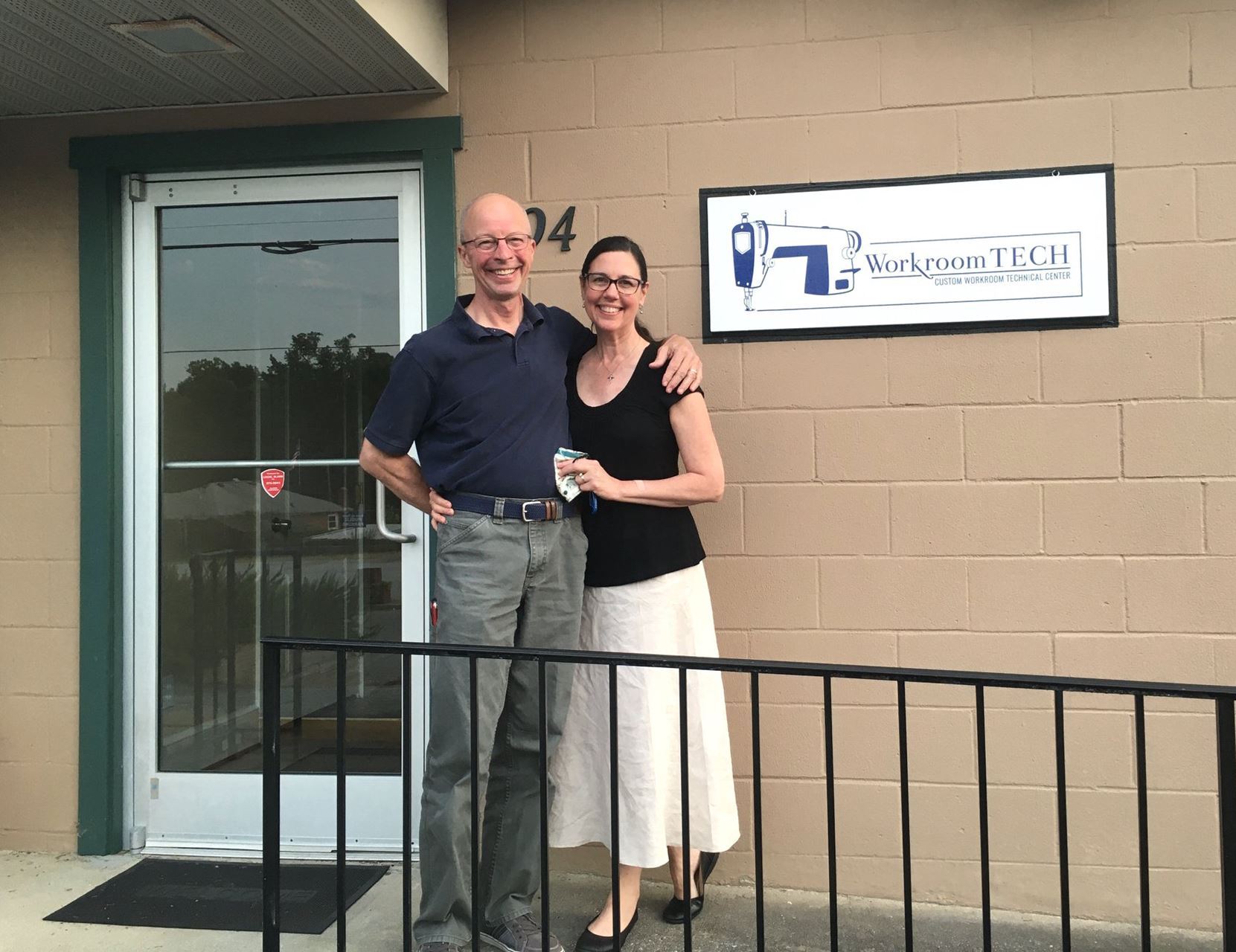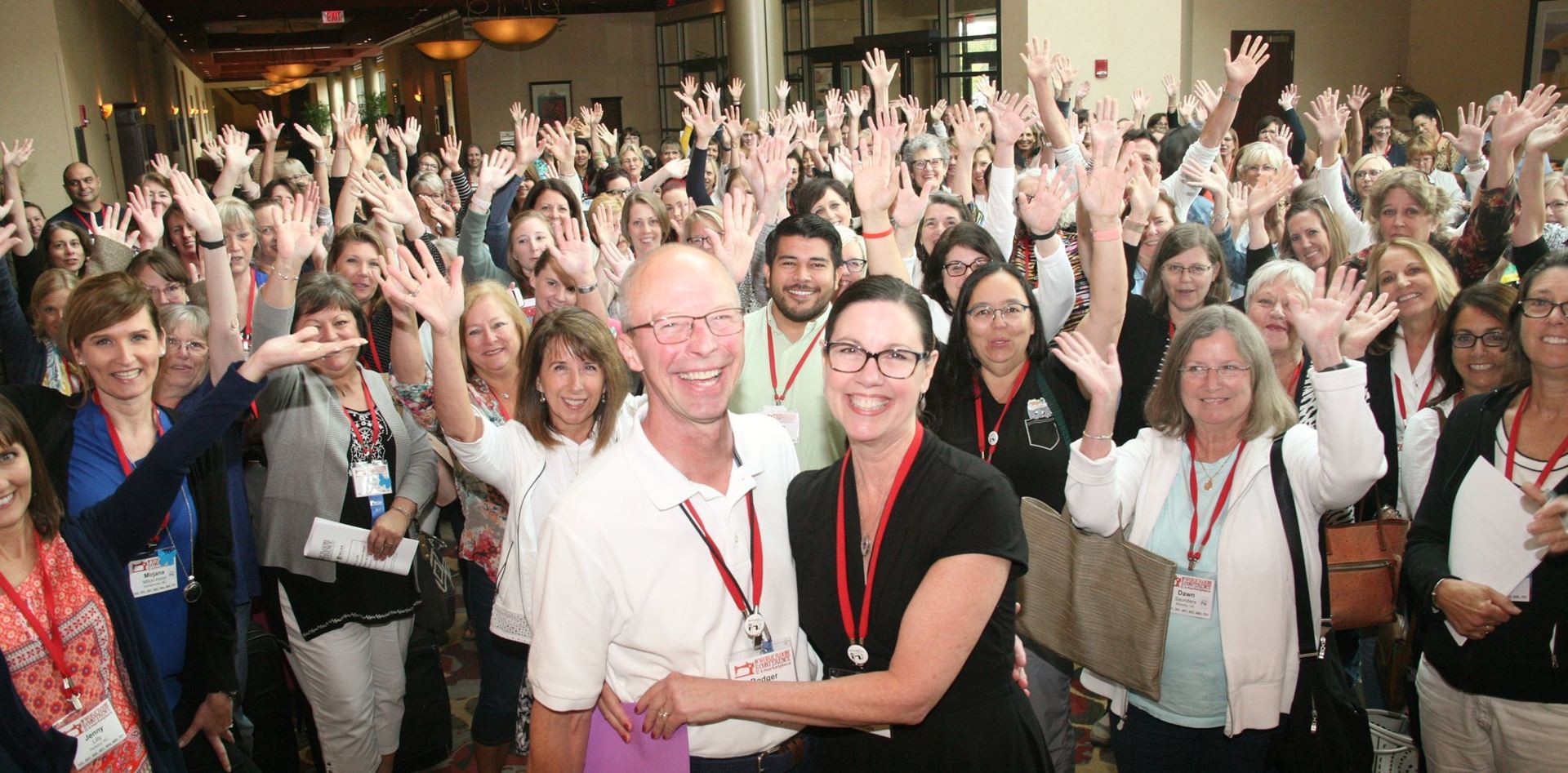Written by NUA Volunteer, Monica Rhodes
Sewing is all about connection, about binding pieces together to make a whole that is greater than the sum of its parts. As I listen to Susan Woodcock, owner of The Custom Workroom Training Center (a.k.a. Workroom Tech) in North Carolina, tell her story, it is clear that she was born to sew. It is also abundantly clear that she was destined, on a larger scale, to bring our tradespeople together as a community that is even greater than the sum of its members.

When I ask Susan to name a tool that feels like it is an extension of herself her eyes light up. “I LOVE my industrial sewing machine.” Susan learned as a girl on a Singer model 3115. Today, her preferred machine is a direct drive with a servo motor; she has owned a Brother 7200 for 15 years. “You buy a machine as an investment,” Susan notes, “it can be your machine for 30 years.” Susan’s mother, widowed in the 1960s, supported five children fashioning exquisite window treatments and soft furnishings in her home workshop. “She could, and would, sew anything,” remembers Susan, “embroidery, quilts, garments, colonial costumes for Barbie's…There was no limit to her creativity.” Susan and her siblings (three brothers and a sister) grew up with confidence in their ability to make things. “It was just part of life.”

Susan, among other things (including trade writing, editing and brand management), ran her own home-based high-end window treatment business for 30 years. A few years ago, she was listening to the Sew Much More podcast by Ceil DiGuglielmo and noticed that “so many people featured there started out with hands-on training, but that really wasn’t available anymore.” With this seed planted in her head, Susan and her husband Rodger, a retired firefighter, started looking for places in Tryon, NC to set up a trade school. Tryon, nestled in the foothills of the Blue Ridge Mountains, is a haven for artists, musicians and small businesses - warm, welcoming and alive with creative energy. Susan muses that Workroom Tech probably would not have come about had she and Rodger not moved there five years ago.

Workroom Tech was a natural extension of a previous and remarkable accomplishment. Susan had always enjoyed attending trade conferences but, by about 2008, the opportunities to do so had become scarce. In 2015, Susan and Rodger took it upon themselves to produce the first annual Custom Workroom Conference (CWC) culminating in in the first annual CWC event in 2016. They decided to start small, planning for 50 attendees. Looking for guidance, Susan consulted her friend Tim Allen, Marketing Manager for Hanes Fabrics, over lunch one day. By the time the check arrived, Tim had pledged full sponsorship. Susan was floored by this, but even more so by what happened next; 180 people signed up for the conference. Susan and Roger had to scramble to arrange additional hotel rooms. “People showed up not knowing what they would get,” says Susan, “just starving for those relationships.”

From the beginning, the conference included upholstery classes, but in 2019 the emerging National Upholstery Association (NUA) held a symposium there. “So many drapery people attended (the symposium) and so many upholstery people attended drapery workshops.” Susan says smiling. The CWC attracts participants from around the world. Susan and Rodger have found that 200 attendees plus exhibitors and vendors is the sweet spot, keeping the atmosphere dynamic but intimate. “200 people gathered together, people who make things with their hands. There’s nothing else like it in the world,” says Susan. “People with different business experience and perspectives. There’s nothing better than all those people having fun, sewing, learning, going home and using skills, and staying in touch. No other industry embraces new people like ours. People come not knowing anyone and go home friends with industry superstars.” Sadly, this year’s conference has been postponed until October 2021 due to Covid-19. Susan shakes her head, “It’s hard to imagine not passing things around, touching things. That energy is what makes the conference so important and you just can’t get that online.”

The energy generated by the first CWC events fueled Susan’s vision of the trade school. She wished to create a place where people would gather together, face-to-face, to acquire technical and business skills toward establishing their own workshops. “Many people want home businesses for various reasons. There is great interest in having a creative business and doing something that you love. At the end of the day you’ve made something. That’s very appealing. I want people to be proud to own a workroom. It can be whatever (they) want it to be. This is no ‘old lady in the basement’ situation.” Since opening doors three years ago, Workroom Tech has been a great success. People have come from all over the country to learn while enjoying the camaraderie and lovely surroundings, often joining one another for coffee, a glass of wine or a meal outside of class. And many have gone on to open their own workrooms. After several students expressed an interest in a credential, Susan created a certificate program: 150 hours, 25 devoted to business and the rest to hands-on experience at Workroom Tech and/or in a verified apprenticeship. In addition, candidates must be serious about opening a workroom and must contribute in some way to the broader welfare of the trade.
Susan’s vision for Workroom Tech was always centered on bringing people together face-to-face, but COVID-19 has forced her to convert to online classes. The silver lining is that many people who may never have had the opportunity to travel to Tryon are able to partake of instruction; and the community, camaraderie and common goal are sources of solace, friendship and inspiration during this difficult time of restricted contact. Online classes for beginners accommodate up to 30 students (vs. 6 in-person). So far, all have focused on window treatments. Susan packs boxed kits for beginners containing all needed supplies, save for the face fabric, which participants source themselves. This is no small feat as packing and mailing kits is time consuming and logistically challenging. Classes for professionals are more flexible in terms of size as participants source all of their own materials. Susan is considering an online upholstery class for beginners centered on a small, simple to source item, like a footstool, that participants would provide themselves.
These days, when not writing or teaching, you’ll find Susan sewing quietly at one of the 4 large tables in the brightly lit training center, content doing her work, but looking forward to the day those tables are once again filled with people talking and sharing, creating together, passing materials and finished work from hand to hand. “At the end of the day, you’ve made something,” Susan said.
At the end of each day, so many who have benefited from Susan’s teaching can be proud, not only of the beautiful things, but of the relationships and the businesses they have made. I sincerely hope that, from time-to-time, Susan steps back to appreciate what she has made – this strong and supportive community of tradespeople secured together by the common threads of joy and pride in creating and the desire to help one another thrive. These are the ties that bind and, at the end of the day, they are what will get us through.
Susan Woodcock is the author of several publications including the books, Singer® Sewing Custom Curtains, Shades and Top Treatments and First Time Window Treatments: The Absolute Beginner's Guide
Susan's podcast "30-Minutes with Workroom Tech" is produced by The Sew Much More Podcast, and can be found at SewMuchMorePodcast.com and iTunes.
Links
www.workroomtech.com
www.customworkroomconference.com
www.homedecgal.com
www.hanesfabrics.com
In addition to Workroom Tech online classes, Susan has classes available on:
www.Craftsy.com &
www.theworkroomchannel.com
______________________________________________________
This article is part of the NUA educator member spotlight series. Find a list of our educator members here.